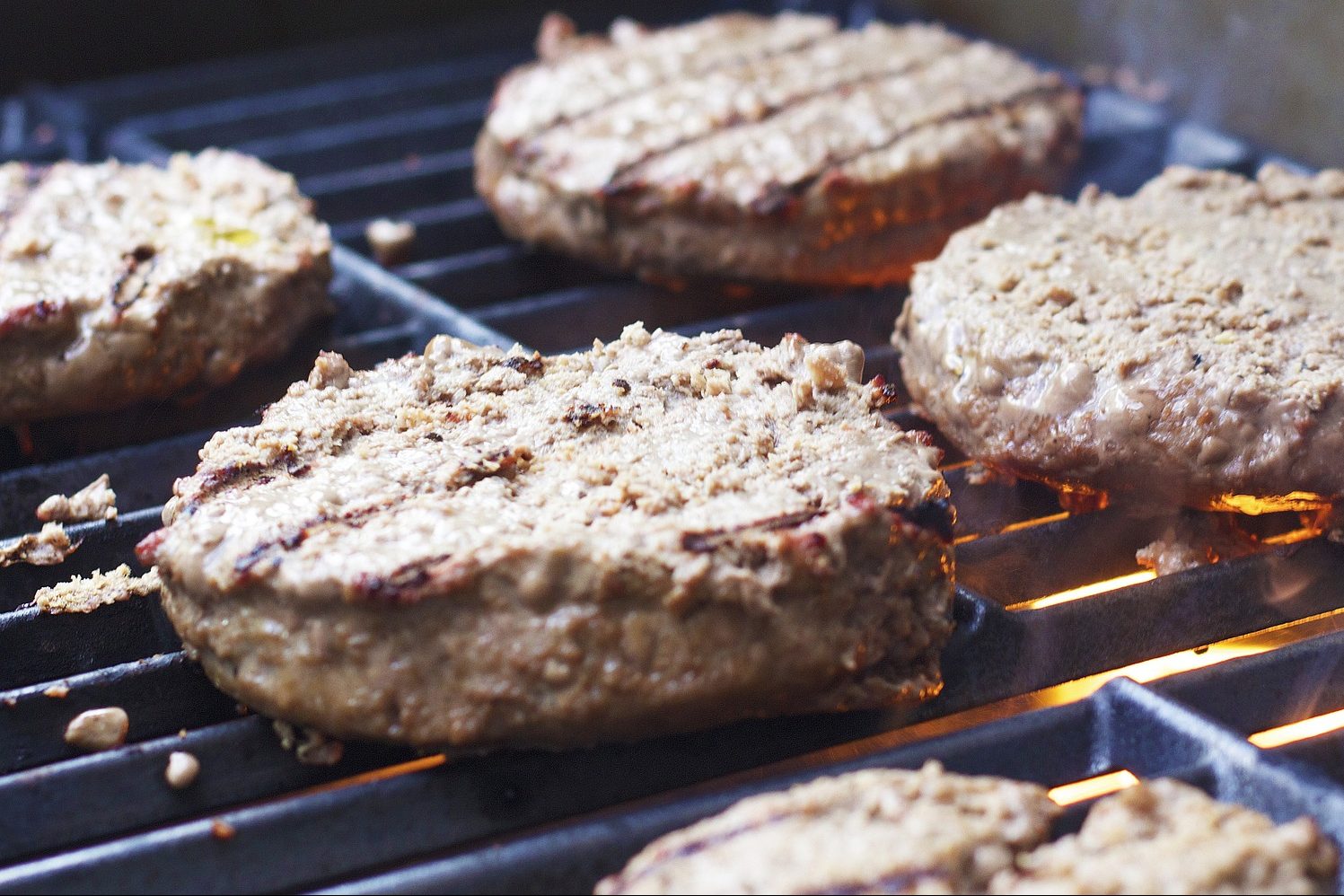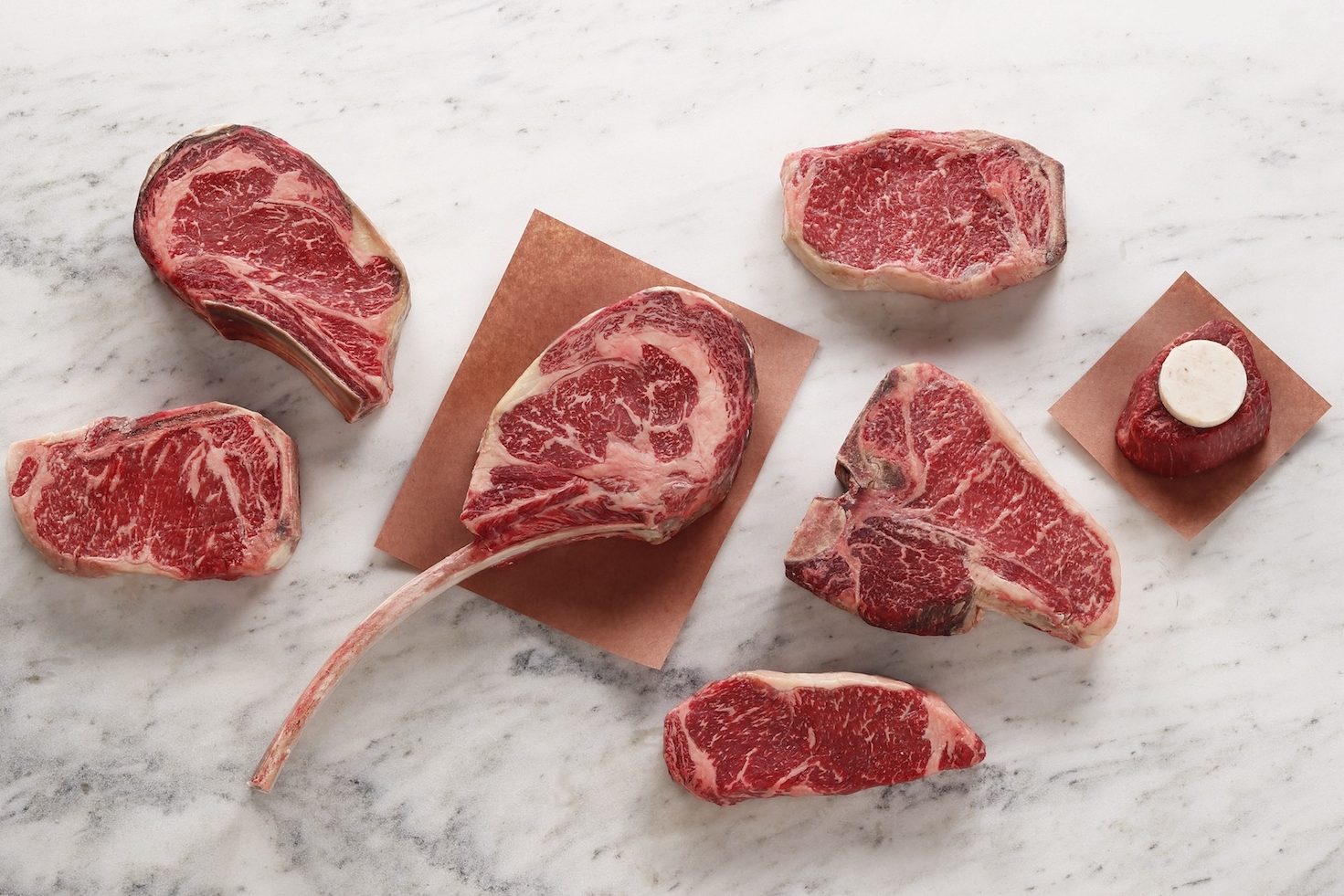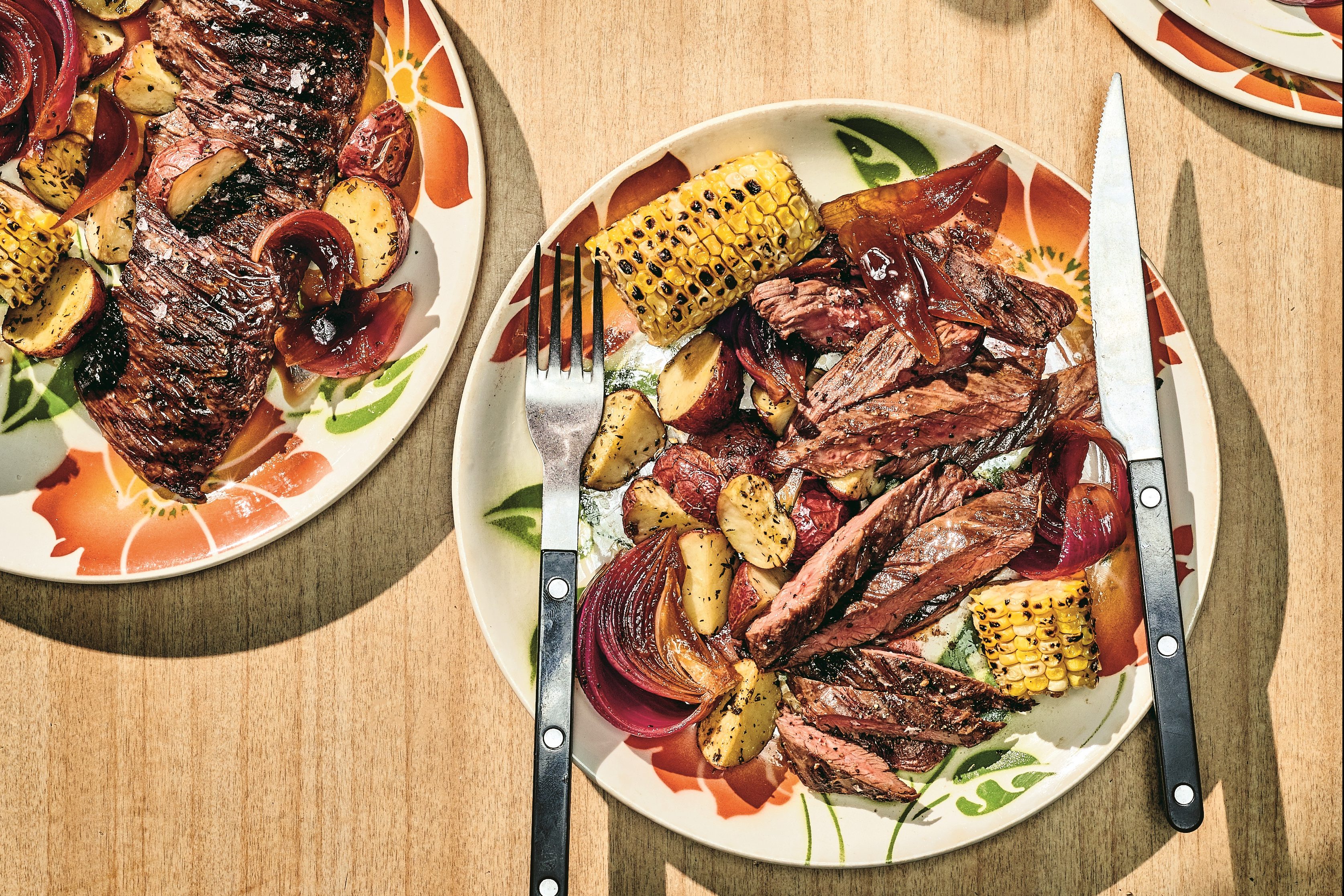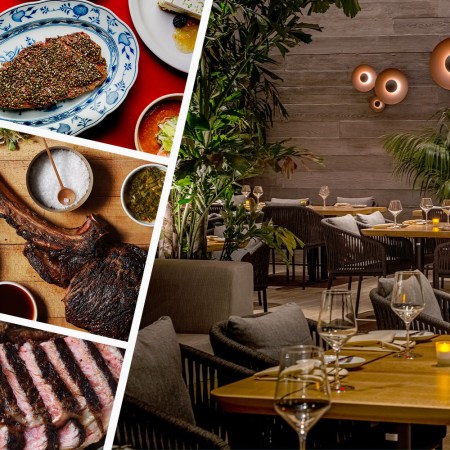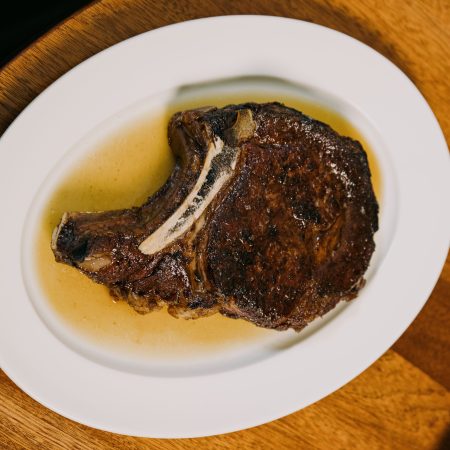When the COVID-19 pandemic was in full swing, many of the nation’s top one-of-a-kind steakhouses — including Brooklyn legend Peter Luger — turned to pick-up and delivery as a means to stay afloat.
If you happen to live within walking distance or the delivery zone of one such establishment, by all means stop by and help your favorite local steak maestro by having a sit-down meal or ordering a to-go feast. But if you don’t and are still looking to enjoy an indulgent meat experience, we have some suggestions courtesy of Porter Road co-founder and All-Star carnivore James Peisker.
Tennessee-based Porter Road, which dry-ages all of its steaks (the same method Peter Luger uses), also offers a number of special butcher cuts you don’t often encounter in the wild. Though they tend to sell out fast, especially with so many aspiring grill-masters still sticking close to home these day, we got notes from Peisker on six of his favorites: the tri-tip, Denver steak, teres major, bavette, merlot steak and picanha.

Teres Major
What part of the cow is that? The teres major is cut from the shoulder of the cattle. “Traditionally, you would have been taught to cut this particular muscle directly in half, because animals used to be smaller,” Peisker says. “With larger beef, this particular muscle is able to be harvested and cut in a very specific way. It’s about three-quarters of a pound to a pound apiece.”
Why is it rare or difficult to harvest? This cut is only possible to retrieve using a technique called seam butchery. “We actually cut our entire beef shoulder in a very specific way so we can harvest out this particular muscle,” Peisker says. “A lot of big places won’t take the time or the care to harvest that particular individual muscle.”
What’s the best way to cook it? Season with kosher salt and pepper, then sear in a hot skillet with grape-seed or another neutral oil. Keep it rare to medium-rare. “If you try to cook it past medium-rare, it becomes shoe leather,” Peisker says.
What makes it unique or why do people love it? The muscles around this small piece of meat are developed by the animal’s active life on pasture. It is also called the “petit tender” because its texture so closely resembles a tenderloin. “Hardworking muscles develop more flavor, but they also generally develop more connective tissue,” Peisker says. “This particular muscle has finer-grain muscle fibers, so it remains tender.”
Anything else? “Europeans started pioneering seam butchery to get out as much beef as possible,” Peisker says. “The teres major is a very well known cut at bistros. So, when you think of a steak frites at a bistro in France with a glass of red wine, this is a really traditional cut because it’s super inexpensive.”

Denver Steak
What part of the cow is that? A newer cut to the steak world, the Denver steak is less than a decade old and comes from the inside area of the chuck, also known as the chuck roll. “It once was left in the 7-bone chuck roast,” Peisker says. “As beef is bred and raised bigger, we are able to pull out individual muscle cuts now. This is one of those muscles that come from a hard-working area to create a bunch of flavor, but this specific muscle doesn’t do much work and remains tender.
Is it from Colorado? The cut obtained its name because marketers put together a consumer focus group and found the name “Denver Steak” appealed to customers.
What’s the best way to cook it? “I love the versatility of this cut,” Peisker says. “It can be high heat cooked like grilling or searing but also is amazing smoked, sous vide, or braised. It depends on what time of year it is and what the weather is like. It changes as the weather does. It is amazing braised in beef stock and aromatics. Served over mashed potatoes or polenta with a nice greens garnish with a citrus dressing. Yum. It truly can do it all.”
Anything else? Don’t be turned off by the PR-savvy backstory — this cut is delicious. The Denver is typically more marbled but tougher than a New York, yielding an incredibly beefy flavor at a fraction of the cost.

Tri-tip
What part of the cow is that? The tri-tip comes from the groin of the cattle. “It’s called the tri-tip because of its shape,” Peisker says. “It is a three-pointed roast that sits right in the crotch area. It looks like a really poorly drawn triangle.”
Why is it rare or difficult to harvest? It’s harder to harvest because this muscle lies between two common “blocks” of beef and would typically be cut in half when the beef was blocked to be transported. “You always want to start at the smallest point of the tip, and then slice all the way down to the base, cutting against the grain,” Peisker says. “If you cut a tri-tip into steaks, they are called Newport steaks.”
What’s the best way to cook it? It is best cooked to medium-rare and served with chimichurri sauce. It’s also good smoked. If overcooked, it will become chewy. “This particular cut is really good slow-roasted and served pretty rare,” Peisker says. “It develops good connective tissue so you can slow cook it and it’ll still be really good without drying out.”
What makes it unique or why do people love it? Meat from the groin is packed with flavor. “It ends up developing this incredible flavor because it’s a hard-working and muscle, but it also marbles out well,” Peisker says. “It collects fat because of where it’s located.”
Anything else? “The tri-tip was a very unknown cut,” Peisker says. “The biggest reason nobody really ever harvested it was because animals were smaller. It’s about a two-and-a-half- to three-pound cut nowadays. Back when beef were half the size, it was not really worth harvesting as much. But as beef started to get bigger, it became more desirable.”

Merlot steak
What part of the cow is that? This hard-to-find butcher’s cut is cut from the upper leg and each beef only yields two. “This cut is cut out of a crazy hard-working group of muscles,” Peisker says. “This cut has to be trimmed out with precision. It is one small little muscle that is connected to four others. It is well worth all the extra work.”
What’s the best way to cook it? This cut is dense and lean and is best cooked hot and fast. “Do it in a cast-iron skillet with a touch of oil,” Peisker says. “Keep it medium-rare. Eat with a fresh salad.”
What do you love about it? This small steak is a solid way to dip your toes into trying out some of the lesser-known cuts. “It is super lean and minerally,” Peisker says. “It is a great salad steak or breakfast steak. Nice small size and has tons of flavor.”

Picanha
What part of the cow is that? The picanha comes from the back end of the beef and sits atop the round near the back legs. “It’s a sirloin cap,” Peisker says. “Picanha is the Portuguese word for what we call a sirloin cap. We launched online calling it a sirloin cap, it didn’t sell. We changed it to picanha and now it sells out. It’s crazy how that works.”
Why is it rare or hard to harvest? The picanha isn’t easy to retrieve. “Whenever you buy really inexpensive sirloin, it’ll have the cap and the top sirloin together, cut across,” Peisker says. “Generally, those steaks are like the size of a dinner plate, with different muscles, different grains going in different ways. Not a great thing. We separate it out because it has a different muscle fiber texture and direction.”
What’s the best way to cook it? The picanha can be cut into steaks and cooked over a fire or grilled whole. Start fat-side down, allowing a char to begin. Rotate until a nice crust forms on all sides and the internal temperature hits 130°F. “This isn’t the most naturally tender cut, so it’s important to not cook it beyond medium-rare,” Peisker says. “The traditional way is to cut into steaks and roast them over an open fire.
What makes it unique or why do people love it? One Picanha can easily feed up to six people. “The amazing fat cap on this cut is one of the things that sets it apart,” Peisker says. “It has a unique flavor and impressive appearance that makes everybody want to throw one on the grill.”
Anything else? “If you drive across the country and see a billboard for a Brazilian steakhouse, this is always the cut that is on the sword,” Peisker says. “Picanha is really well known in South America.”

Bavette
What part of the cow is that? This cut is taken from the underbelly of the cow. “It always used to go into the grinder because it lives right underneath the flank steak on the belly of the beef,” Peisker says. “They would cut that off and then the rest would go into trim. Then somebody smart realized it has a very similar muscle structure to skirt steak.”
Why is it rare or hard to harvest? It’s extremely thick and laden with muscle fibers that fan out. “This cut wasn’t usually taken until the idea of seam butchery came around and cows started getting bigger,” Peisker says. “If you cut it with the grain, it is awful. You have to cut it against the grain.”
What’s the best way to cook it? The bavette weighs about three pounds and it’s about an inch-and-a-half thick, so it can be fairly tough. “It takes really well to marination,” Peisker says. “It’s really good, but it’s another one of those cuts that, as it starts to cook more, it seizes up and become super chewy and tough. You can serve it as a steak or make fajitas out of it.”
What makes it unique or why do people love it? The bavette has tons of great flavor because it’s located right around the belly and does a lot of work. It started getting marketed as a larger skirt steak,” Peisker says. “And then people realized it was actually even better than skirt steak.”
Anything else? “The technical name for this cut is the sirloin flap, and the French word for it is bavette,” Peisker says. “It started getting marketed as the flap and then somewhere along the way, a chef decided that flap is a horrible name.” Et voila, la bavette.
This article was featured in the InsideHook newsletter. Sign up now.

